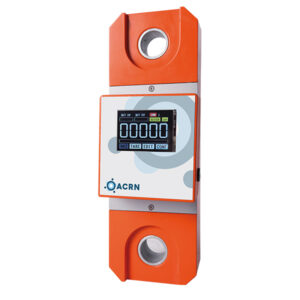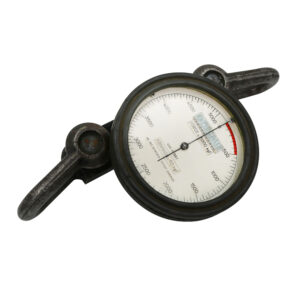High capacity dynamometers
A lifting and high capacity dynamometers are instruments used to measure lifting and pulling force.
It is often used to test the lifting capacity of lifting and handling equipment, such as cranes and hoists, as well as to evaluate the strength of materials used in the construction industry.
It can also be used to measure tensile strength in cabling and lifting systems.
Showing all 2 results
What is a high capacity dynamometer and what is its use ?
The high capacity dynamometer allows to measure forces from 0,5T to more than 50T. It is used to verify the strength and conformity of lifting equipment, cranes and handling tools. It has a high resistance coefficient and is equipped with shackles, hooks. The dynamometer can be used in the aeronautical, railway, space, maritime transport and shipbuilding sectors.
Electronic and mechanical version
There are two main types of lifting force gauges: mechanical lifting force gauges and electronic lifting force gauges.
Mechanical force gauges use transmission mechanisms such as chains, shackles, cables or levers to transmit the lifting force to a gauge or indicator. These force gauges are often used for light to moderate lifting applications, and are generally easy to use and install. They are also relatively inexpensive compared to high-capacity electronic force gauges.
Electronic lift gauges, on the other hand, use a load cell to measure the lifting force. These sensors can be load cells, strain sensors or displacement sensors. Electronic lifting force gauges are often used for heavy lifting applications because they can measure high forces with high accuracy. They are also more flexible than mechanical lifting force gauges, as they can be used with data acquisition systems to record and analyze measurement results. However, they are generally more expensive and may require more frequent maintenance and calibration.
Benefits of a force gauge
Accuracy: Lifting force gauges are generally very accurate, allowing you to measure the lifting force with great precision.
Reliability: Force gauges are designed to be rugged and reliable, making them ideal for industrial applications.
Ease of use: Lifting force gauges are generally easy to use and install, making them accessible to a wide range of users.
Disadvantages of a force gauge
Requires regular calibration: to ensure maximum accuracy, lift gauges must be calibrated regularly.
Requires space to operate: Lifting force gauges require space to be used, which may limit their use in some applications.
Note that this will depend on the application for which you will be using the force gauge, and your specific needs for accuracy and reliability. It is important to consider these advantages and disadvantages before choosing a force gauge for a given application.
Using a load cell with a remote display
Remote displays are a popular option for high-capacity force gauges, as they allow operators to monitor measurements from a distance. This can be especially useful in situations where it is difficult or dangerous for operators to stand near the gauge.
Remote displays can take many forms, including LED displays, LCD displays, or touch screens. They can also be wired or wireless, depending on the needs of the application. Remote displays can be mounted several feet away from the dynamometer and can be configured to display real-time measurements, historical data graphs and alarms when thresholds are exceeded.
By using remote displays, operators can monitor measurements more conveniently and safely, while improving measurement accuracy by avoiding human reading errors. Remote displays can also be used to control applications remotely, using output signals to trigger specific actions based on measurement results.

